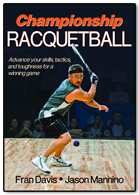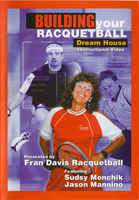Going Back to Basics
Back to the Basics is a key principle to use when you're not playing well and things are just not going your way. If you are not playing well your shots, serves, and returns can begin to breakdown, ending with a lost game or match. This is the perfect time to regroup, assess the situation, and get back to the basics in every area of your game. Going back to the basics helps you to regain consistency, sharpens your mental skills, allows you to think more clearly, and rebuilds any lost confidence to get you back on track. (more…)










